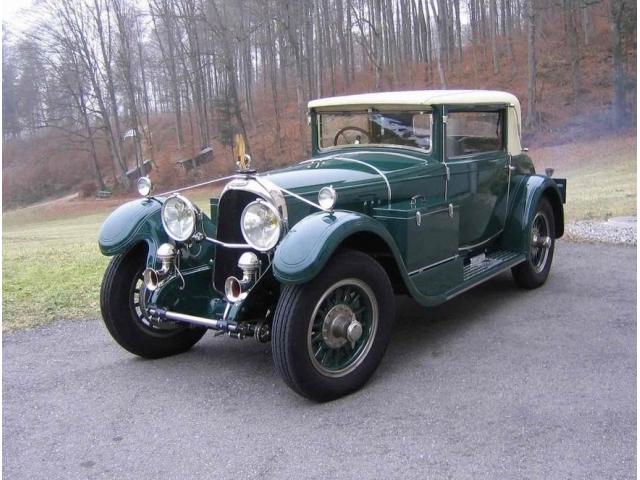1925 Avions Voisin C5 Faux Cabriolet Coachwork by Carrosserie Besset
- Brand: Avions Voisin
Gabriel Voisin was perhaps France's greatest aviation pioneer. In 1907 he built the first practical aeroplane capable of leaving the ground under its own power, and his Avions Voisin company was the first mass producer of aircraft in the world. But the end of WWI in 1918 brought a halt to Voisin's aviation ventures and forced him to look elsewhere to provide employment for his workforce.
After experimenting with motorised bicycles and a light two-seater economy car, Voisin decided to produce an automobile that would be unrivalled for prestige, comfort and speed. Developed for André Citroën from whom Gabriel Voisin purchased the design, the resulting Knight sleeve valve-engined 4.0-litre Voisin M1 appeared in 1919. It was one of the first truly modern cars to be delivered after the Armistice and in 1920 was re-designated 'C1' in honour of Gabriel Voisin's dead brother Charles, though the mechanical specification remained the same. A special version took part in speed trails and hill climbs to demonstrate the speed and economy of the Voisin chassis, and in 1921 a C1 chassis taken straight off the production line and fitted with a skimpy aluminium body, beat the legendary Blue Train from Paris to Nice by six hours.
Voisin kept faith with the sleeve valve engine, developing the design himself and extending it to the smaller models in the range. The work of his engineer, Marius Bernard, the first of these small Voisins was the 1,243cc 8CV C4 of 1921, which was later enlarged to 1,328cc (C4S) and finally to 1,550cc, in which 10CV form it was known as the C7. Although the C4 had only three speeds in the gearbox, this was more than compensated for by the sleeve valve engine's torque and the fact that lightweight coachwork was another of Voisin's obsessions. These attributes made the smaller Voisins highly effective competition cars, and one of them was driven by Dominic Lamberjack from Paris to Milan, beating the Orient Express to provide its manufacturer with much valuable publicity.
The centre of gravity's location and the role of aerodynamics were of the utmost importance to Gabriel Voisin, who, thanks to his prior aeronautical experience, was among the first to take them into consideration when designing an automobile. It is said that couturier Paul Poiret designed the first Art Deco-style fabrics specifically to be used in Voisin's Lumineuse-bodied models.
The Voisins' advanced technology, unconventional looks and necessarily high price made them particularly popular with royalty, artists and other celebrities. The Lumineuse style was favoured by some of the most famous artists of the day, including Rudolph Valentino, Maurice Chevalier and Josephine Baker as well as the radical modernist architect Le Corbusier. One of the first movie stars to achieve universal fame, Valentino owned several Voisin C5s like that offered here. Manufactured between 1923 and 1928, the C5 was powered by a 4.0-litre four-cylinder Knight engine producing a claimed 100 horsepower, which was good enough for a top speed of around 78mph.
Descriptions & pictures by bonhams & coachbuild
| Specification | |
| Production Start | 1923 |
| Production End | 1928 |
| Country of origin | France |















